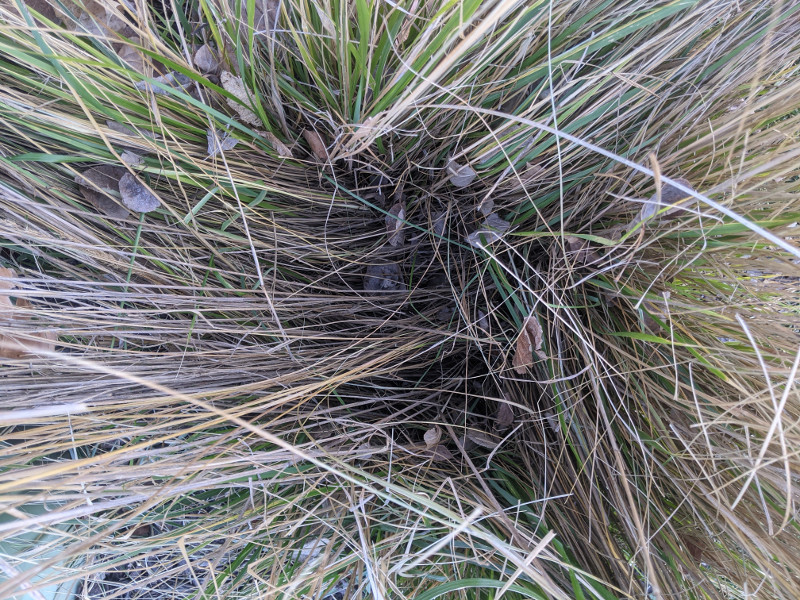Can you divide ornamental grasses? Certainly, and all it takes is a little knowledge, confidence, and a sharp spade or shovel. How do you know when it is time to divide an ornamental grass? Most grasses add new growth around the outside edges of the plant, so the center can eventually wither. When that happens, step in and separate your plant to rejuvenate it and reward yourself with several new, small plants.

When to Divide Ornamental Grasses
The best time to divide an ornamental grass depends on the type. In general, you know it is a good time to divide a grass when the center appears to die back or becomes hollow, and before the grass begins to flower. Other indications that it is time is if the grass begins to outgrow its spot in your garden or container. The longer you wait to divide, the tougher the job can be. Dividing the grass will rejuvenate the plant.
In general:
- The best time of year to divide warm-season grasses is anytime from spring to mid-summer before they actively flower.
- A good time to divide cool-season grasses either in the spring or in early fall, so they have time to recover before winter cold sets in. Typically, early spring is the best time for dividing, and especially for transplanting divided clumps.
- The best time to divide evergreen ornamental grasses or grass-like perennials in spring. Since evergreen grasses never go dormant, it is best to divide them in the spring so the wounds created by cutting into the clump have plenty of time to heal before the grass has to survive winter cold.

How to Divide Ornamental Grasses
You can remove corners or wedges of an ornamental grass by cutting the blades down to just above the ground and using a sharp spade, axe, or other tool to separate pieces from the edges or corner of the grass clump, where the new growth occurs. Dig and cut deeply enough to get some hardy roots with the division. This method is recommended for dividing large grasses that can have root balls that are too heavy to handle, or for creating a new plant or two from a healthy grass. The best method, however, is to dig the plant up using these steps:
Step 1 – Dig the entire clump of grass up.
Circle the plant with a sharp-tipped shovel, making deep cuts outside the grass roots.
Step 2 – Gently lift the plant and main root ball from the ground.
You will cut through some roots, but that is okay.
Step 3 – Divide into several pieces, depending on how many plants you want and how well the original now will fit into the existing spot.
Use a gardening knife, saw, or regular tool saw to cut down the middle of the root ball.
Step 4 – Divide each half as desired to create plants of the size you like.
Make sure each new clump has some roots.
Step 5 – Transplant cuttings into areas of your landscape.
Place one new cutting back into the original hole and fill in.
If you have no room for more plants, share the divided grasses with a friend.
Why Do You Divide an Ornamental Grass?
Reasons to divide an ornamental grass include:
- The grass is overgrown, and too close to other plants or too big for its pot.
- The center of the grass has become hollow or died back.
- An older plant needs new life; dividing it will rejuvenate it.
- Add to your landscape by separating the grass into several plants and placing them in new spots.

Ornamental Grass Dividing Tips
- For the most even division, dig up the entire plant.
- Half the root ball, and half each portion again to get the desired size of new plants.
- If you can't dig up a grass, use a sharp tool to cut through an outer edge of the grass clump and dig deeply enough to get some good roots.
- There is no hard rule on how many times to divide; that depends on the size and health of the plant and how many new plants you want.
- Water all transplants and the replaced grass roots after planting. Continue to give transplants some extra water until they are well rooted.
 |
Author Teresa Odle - Published 12-02-2020 |
